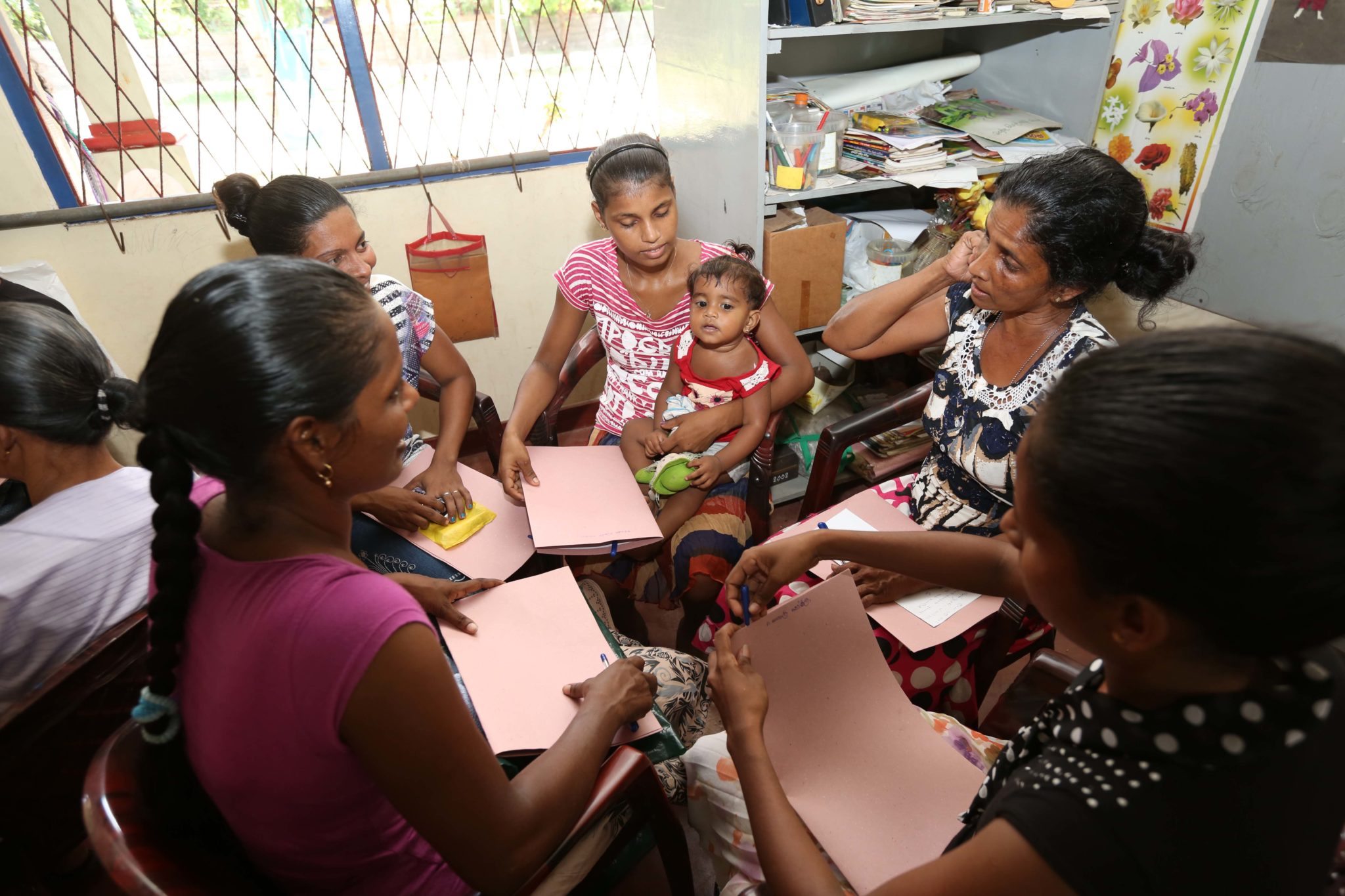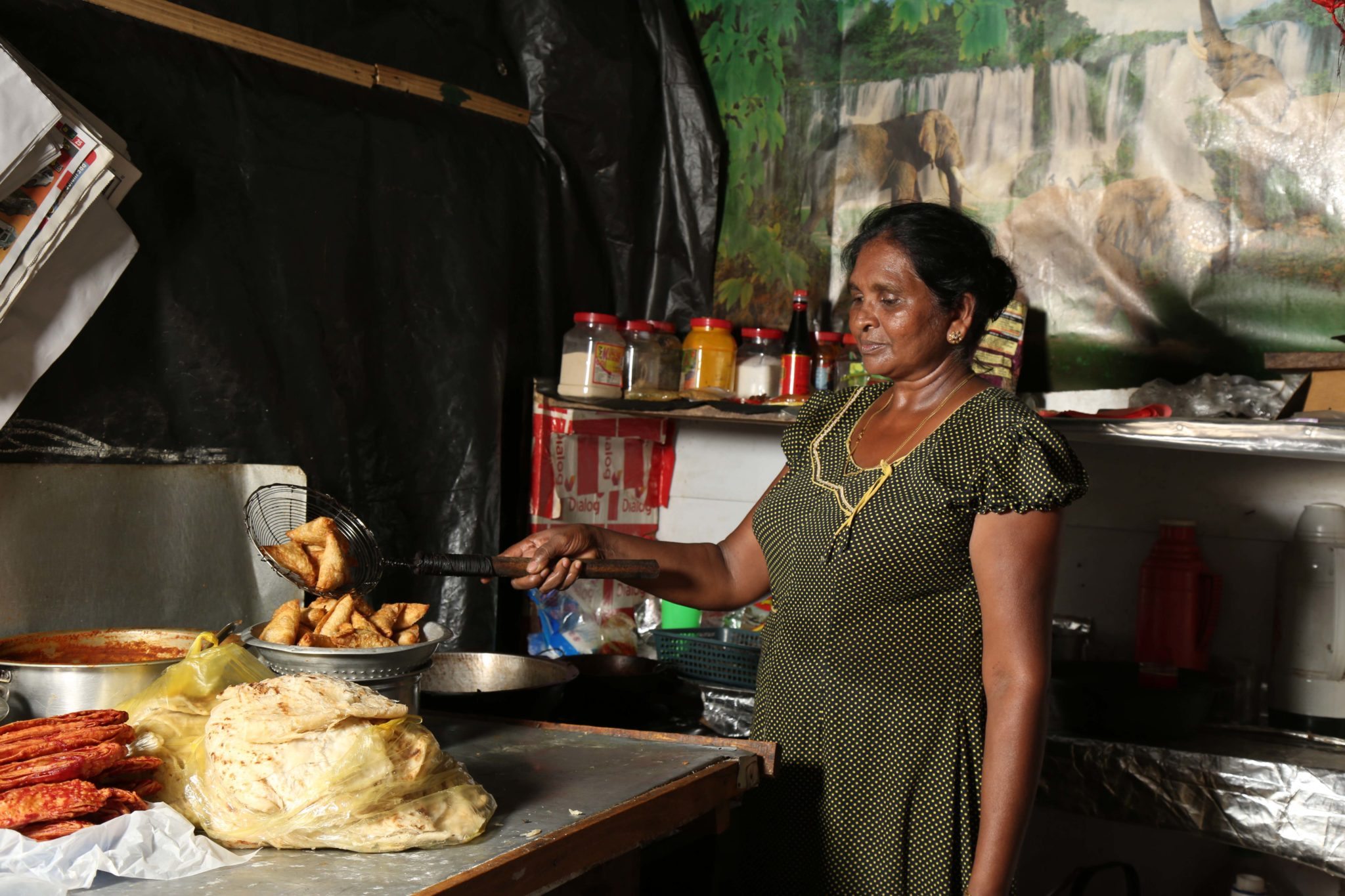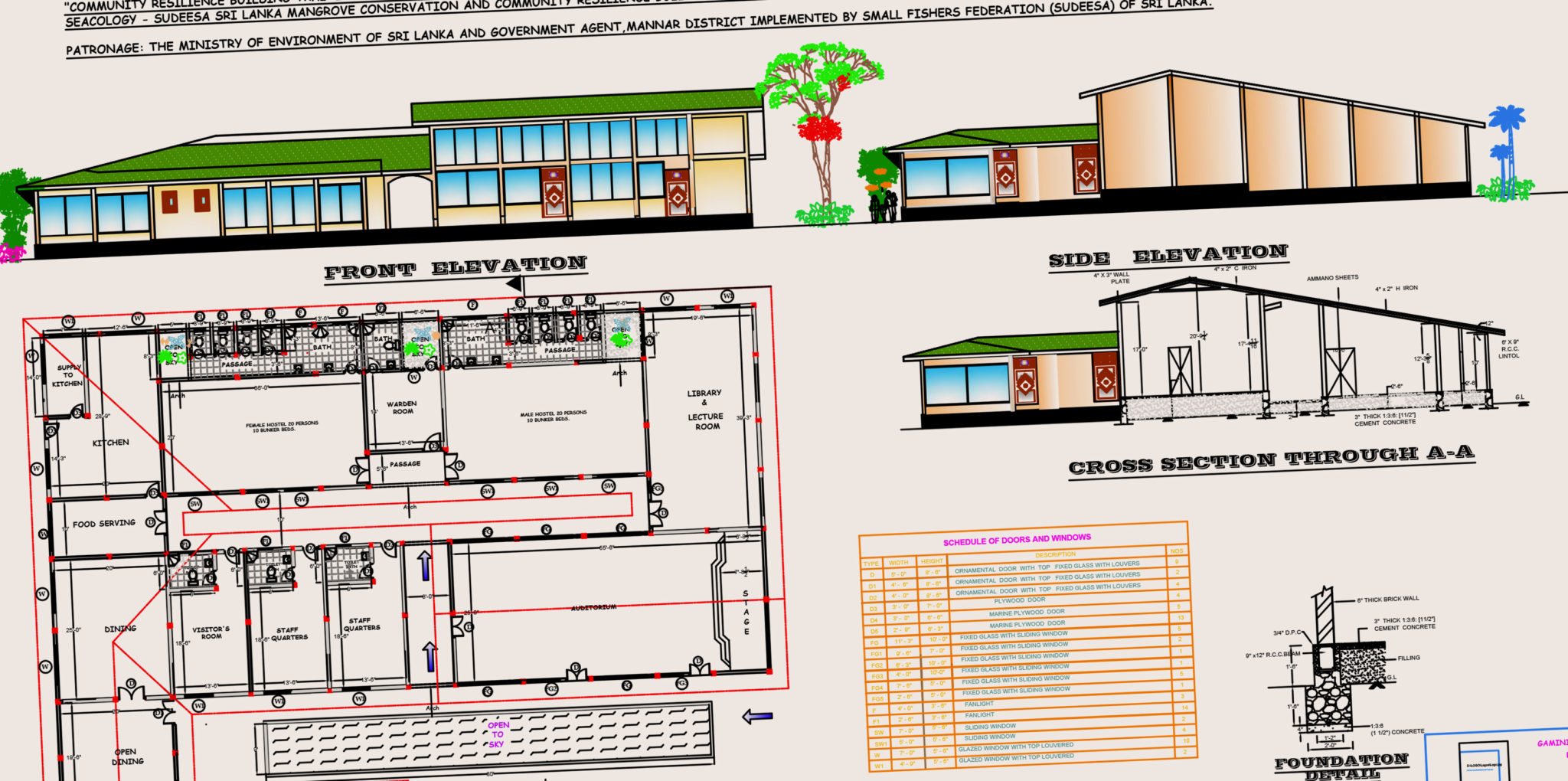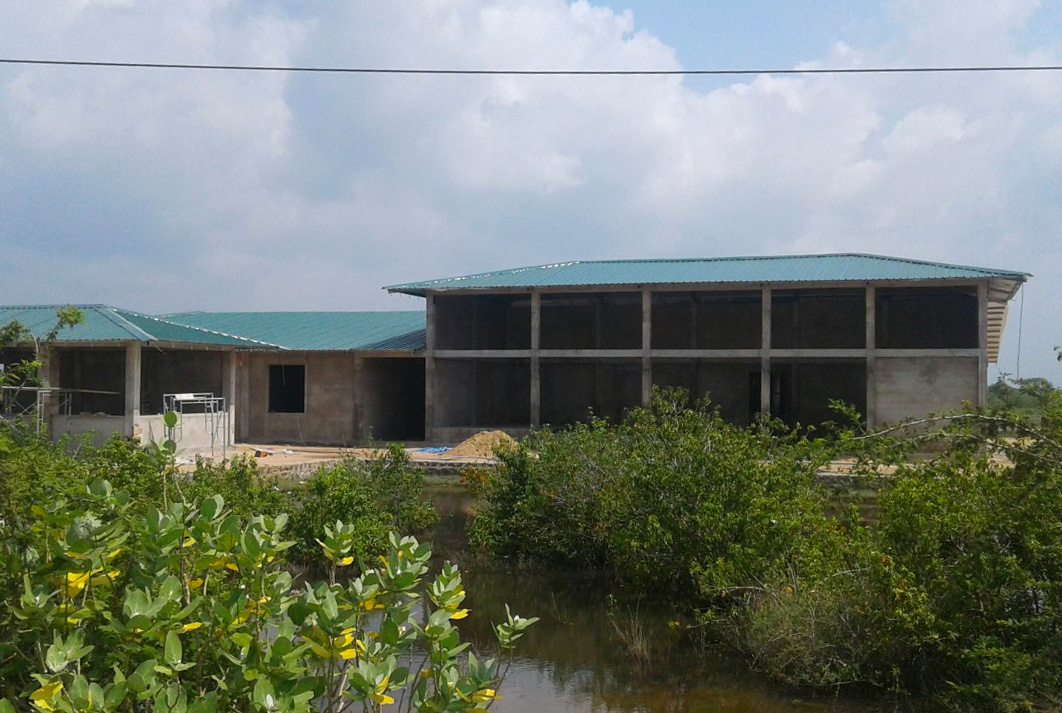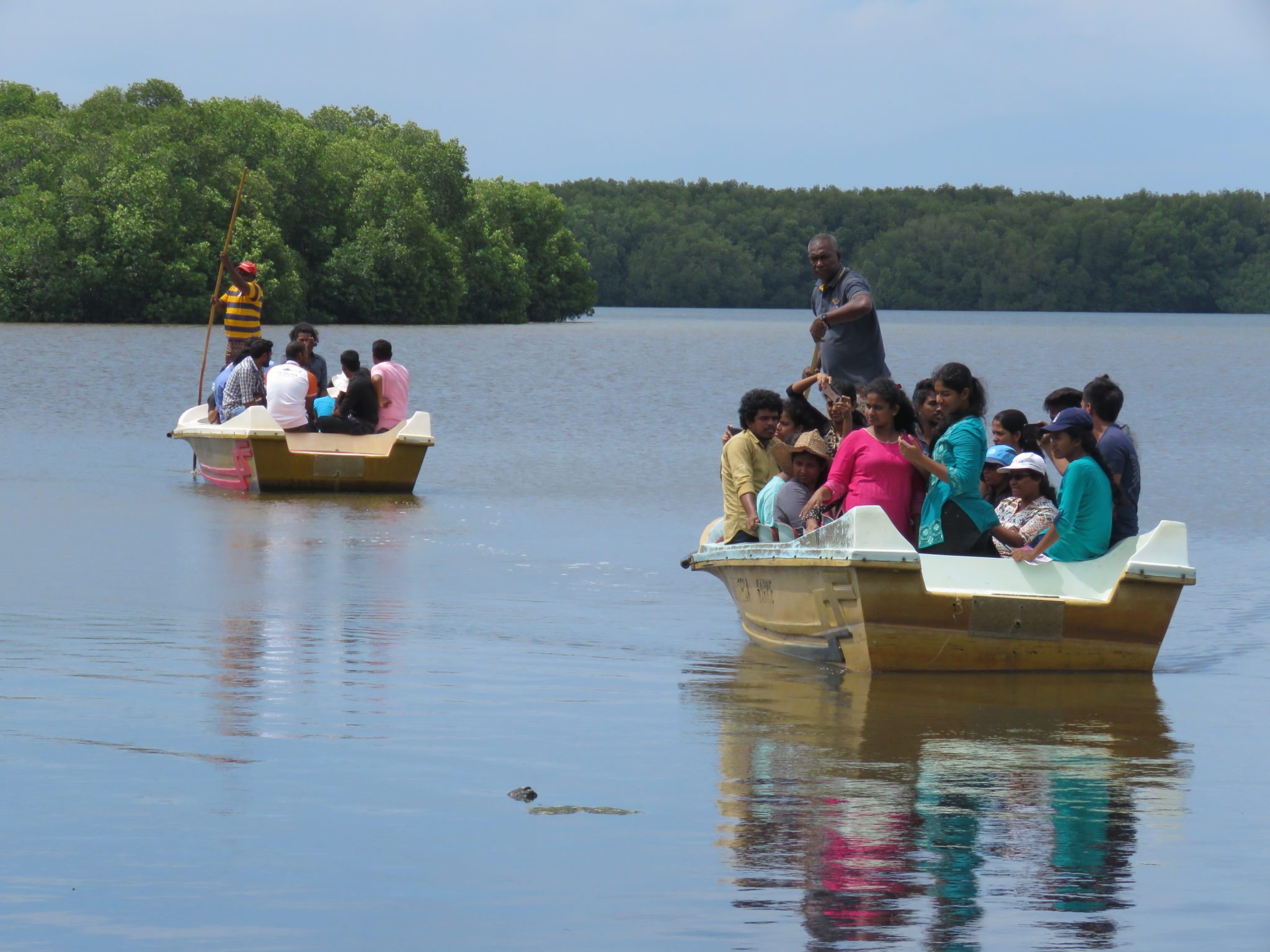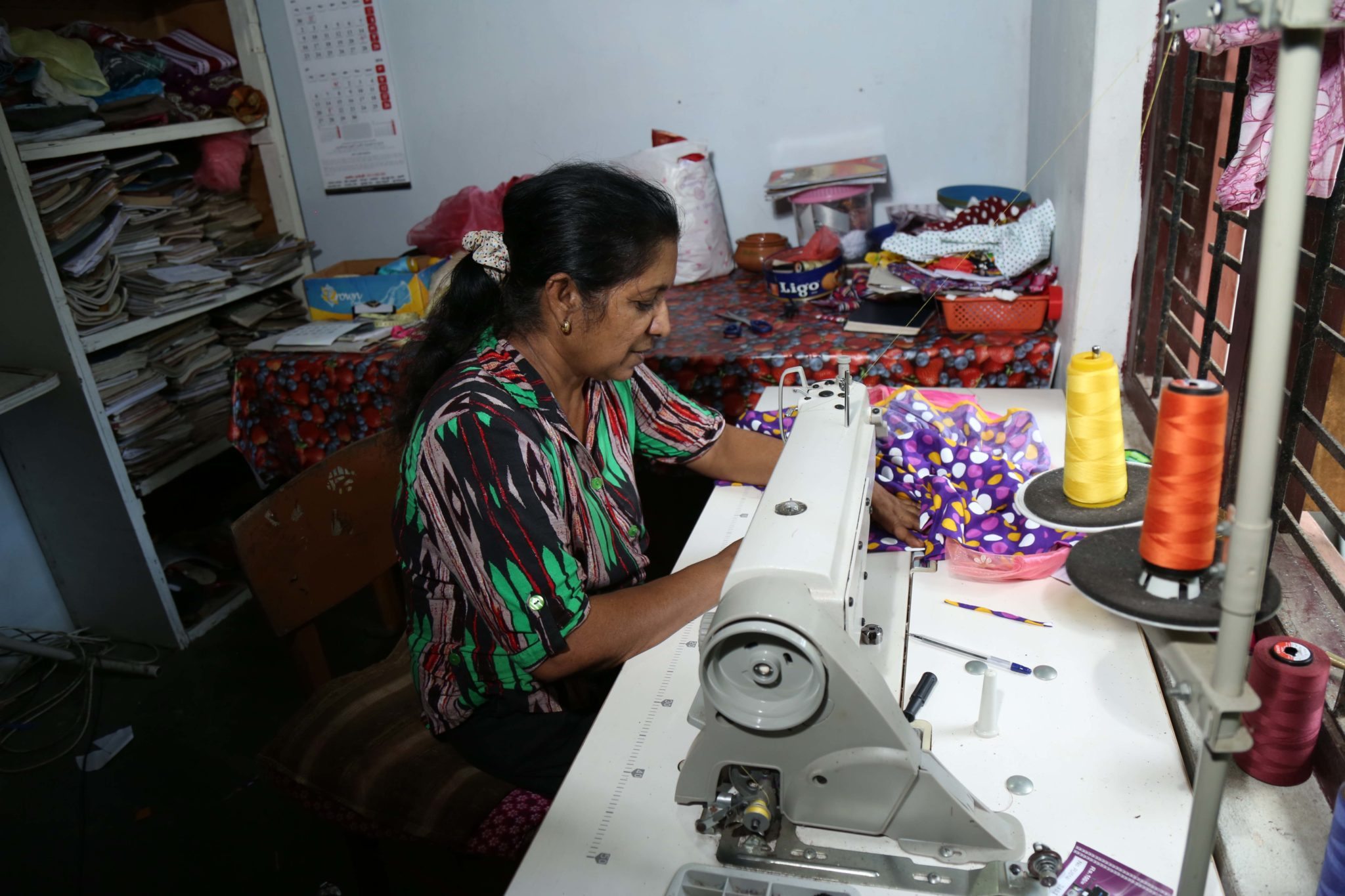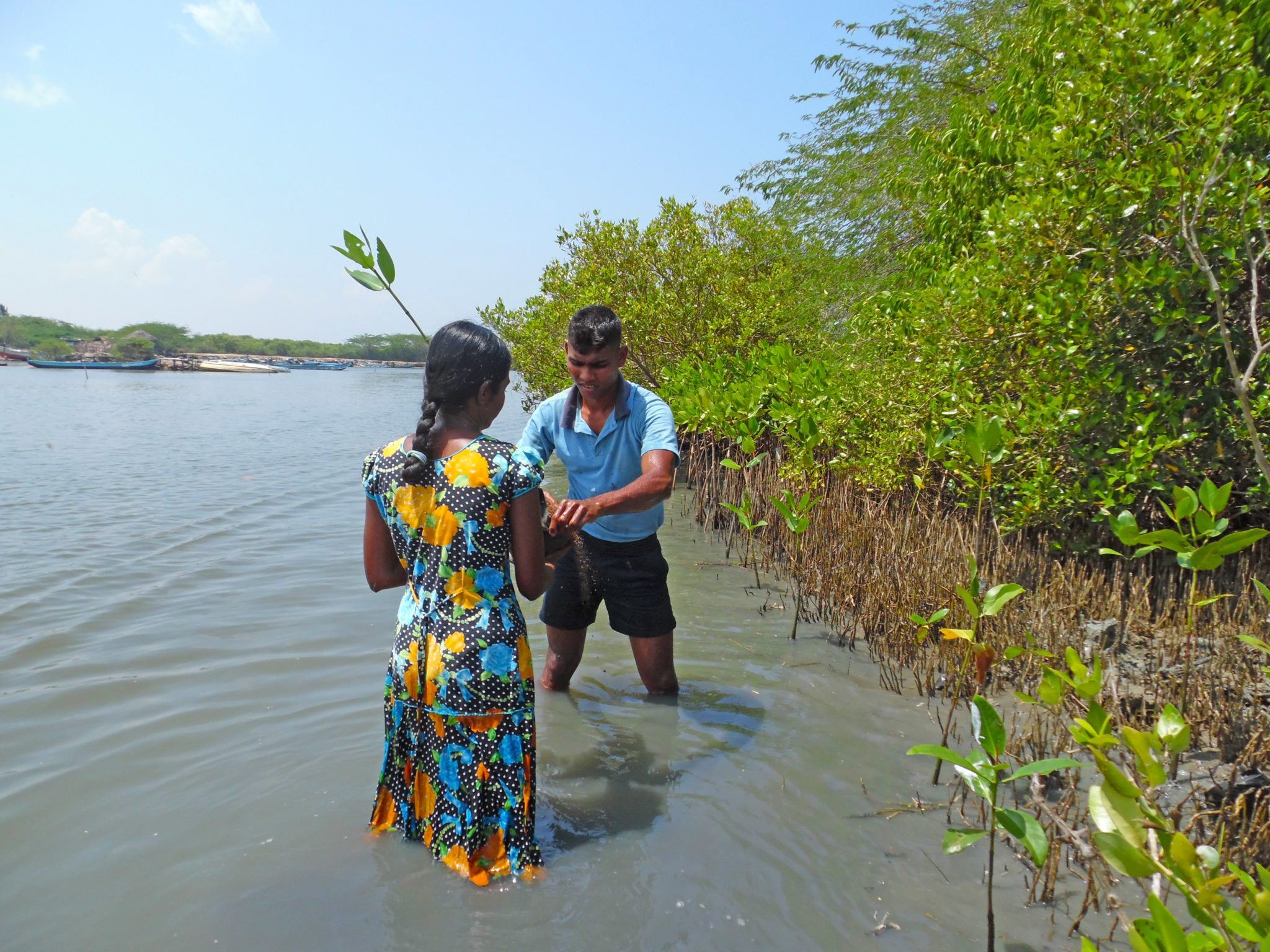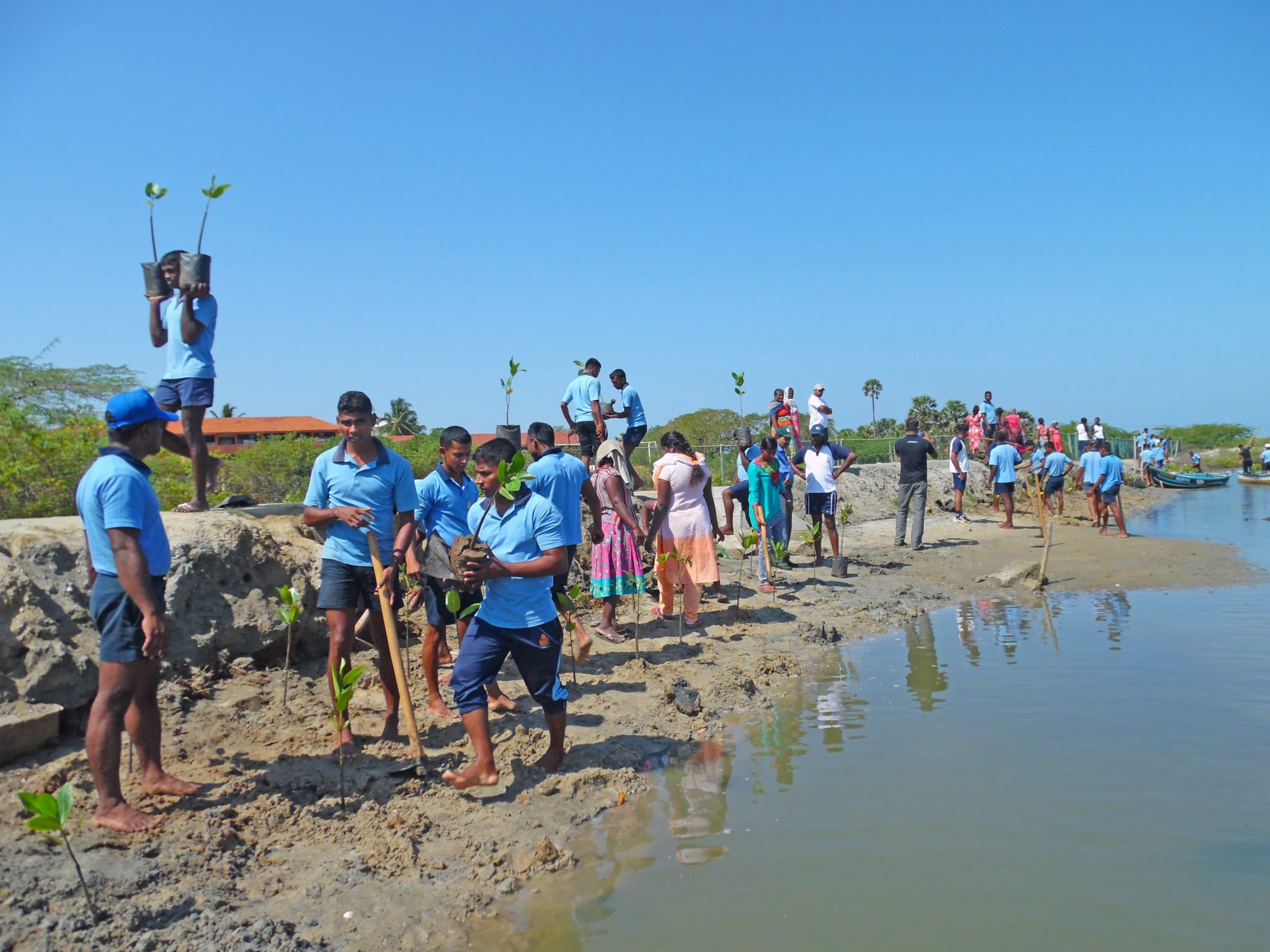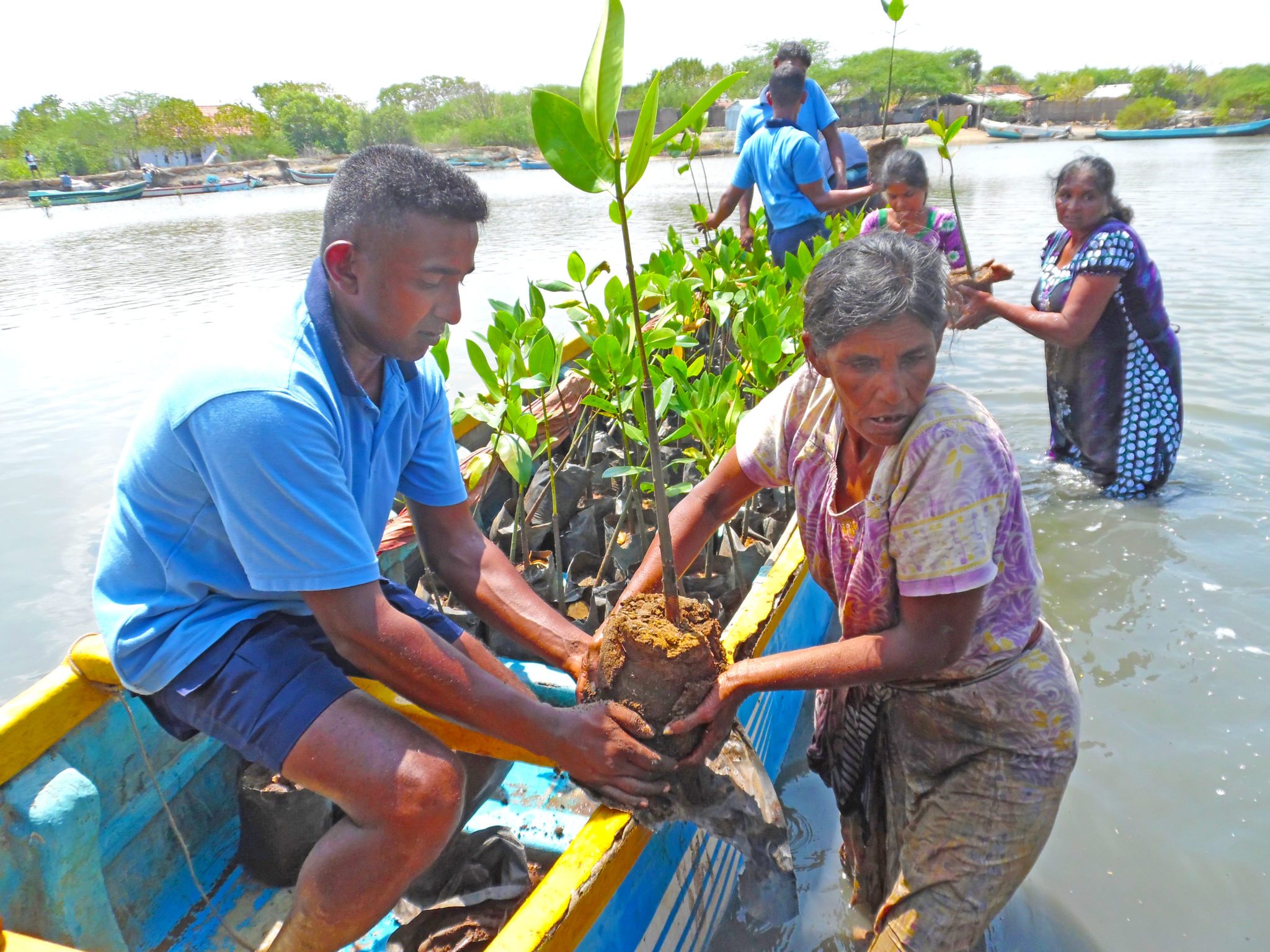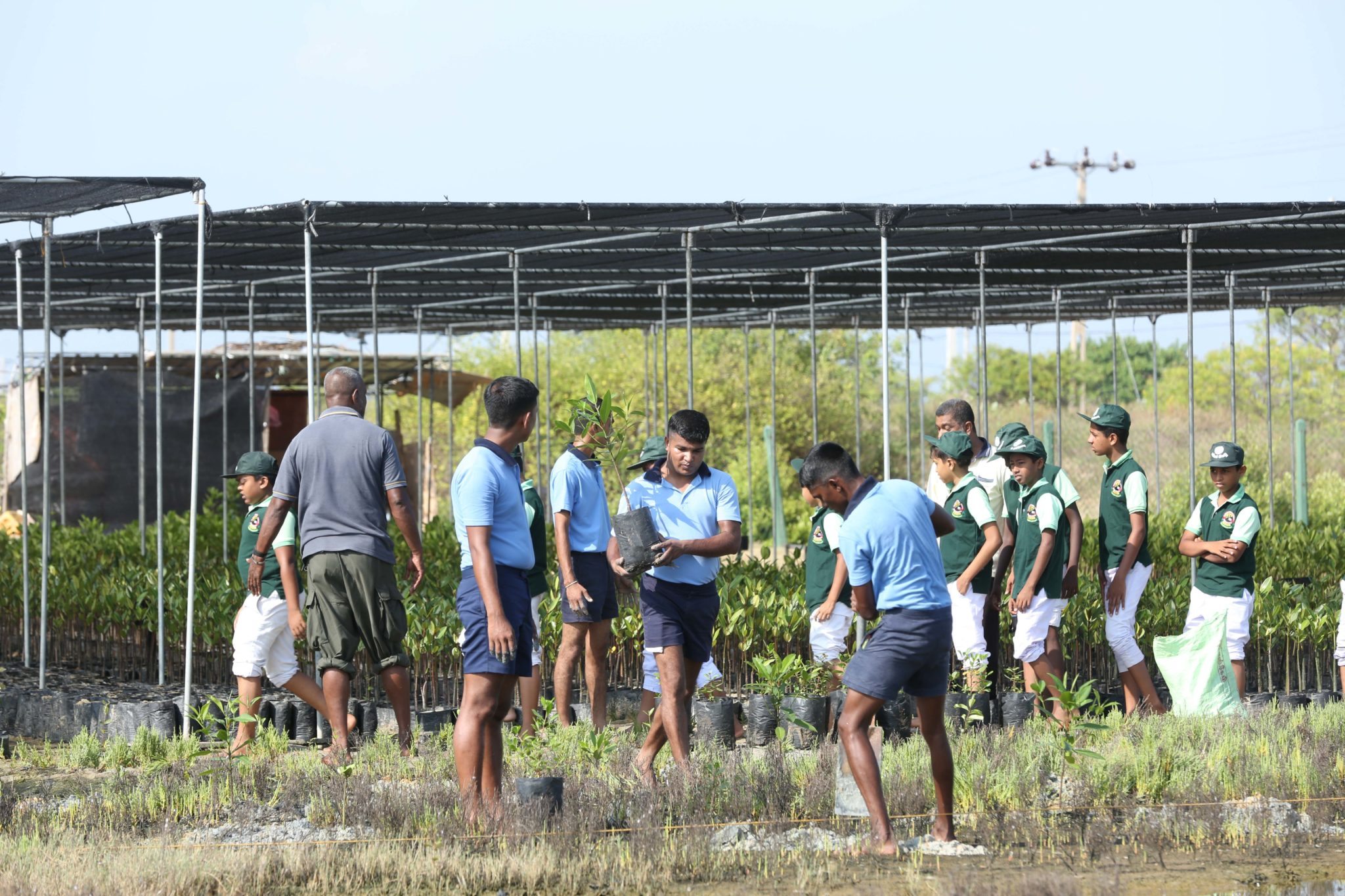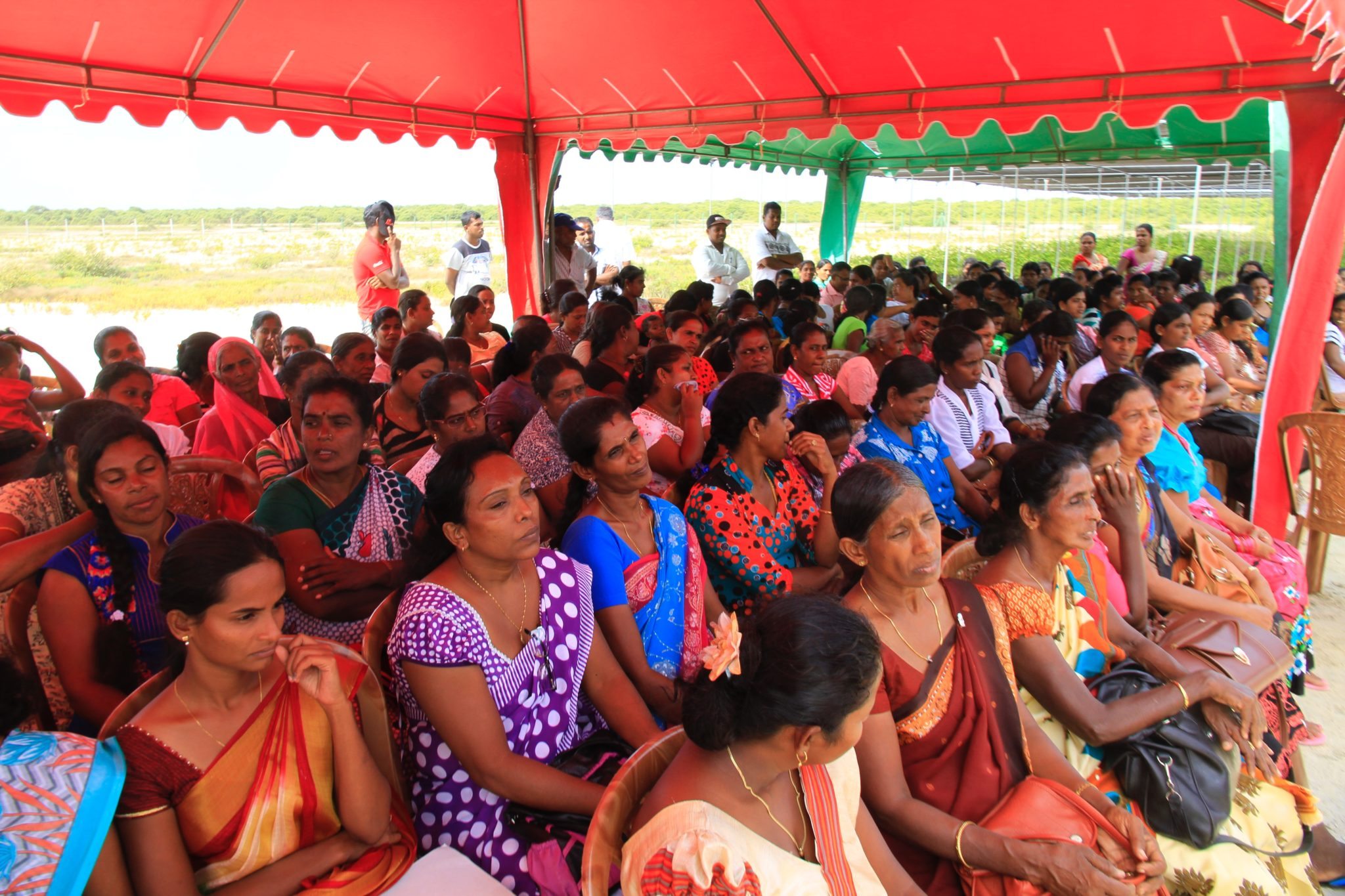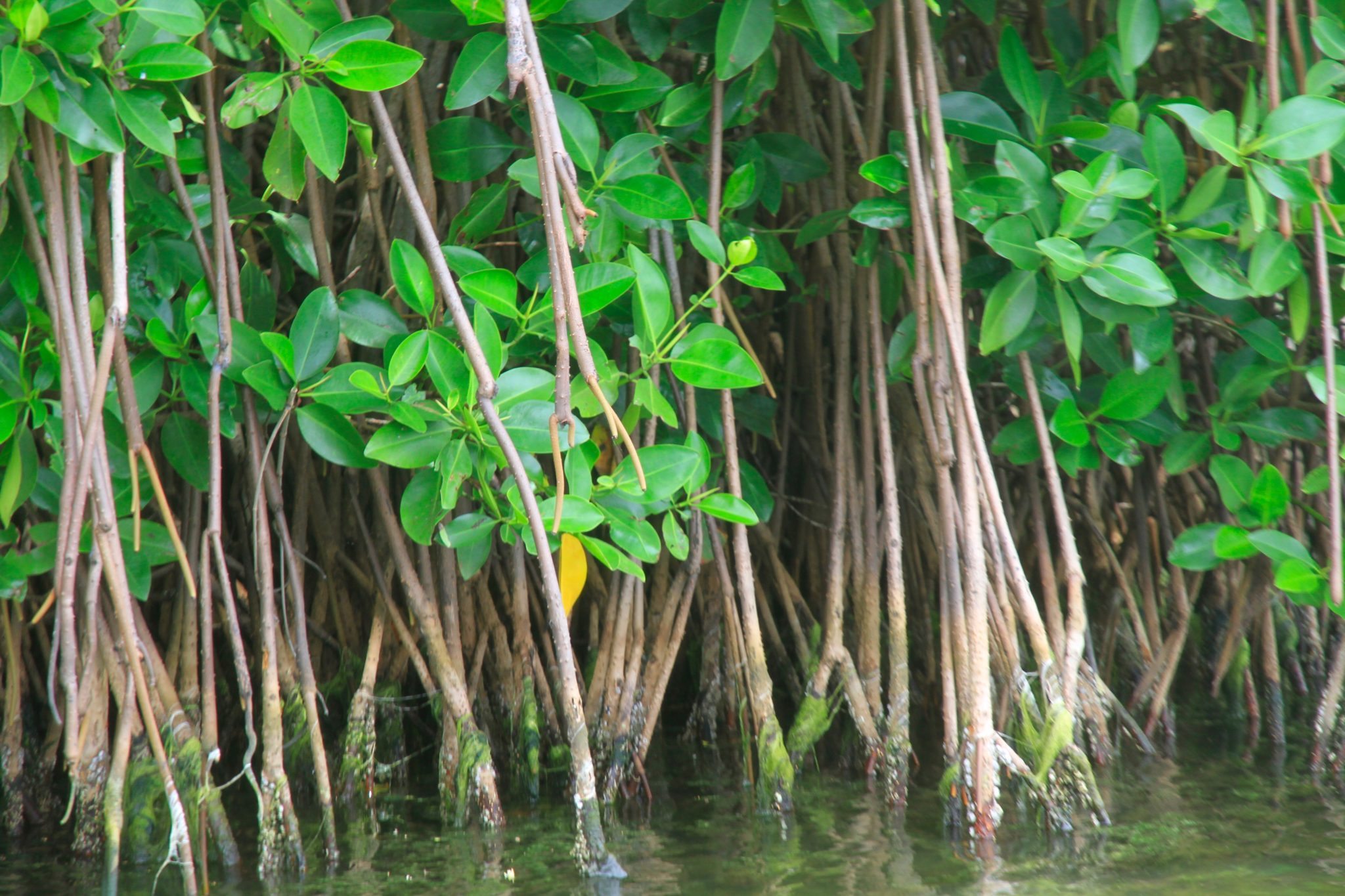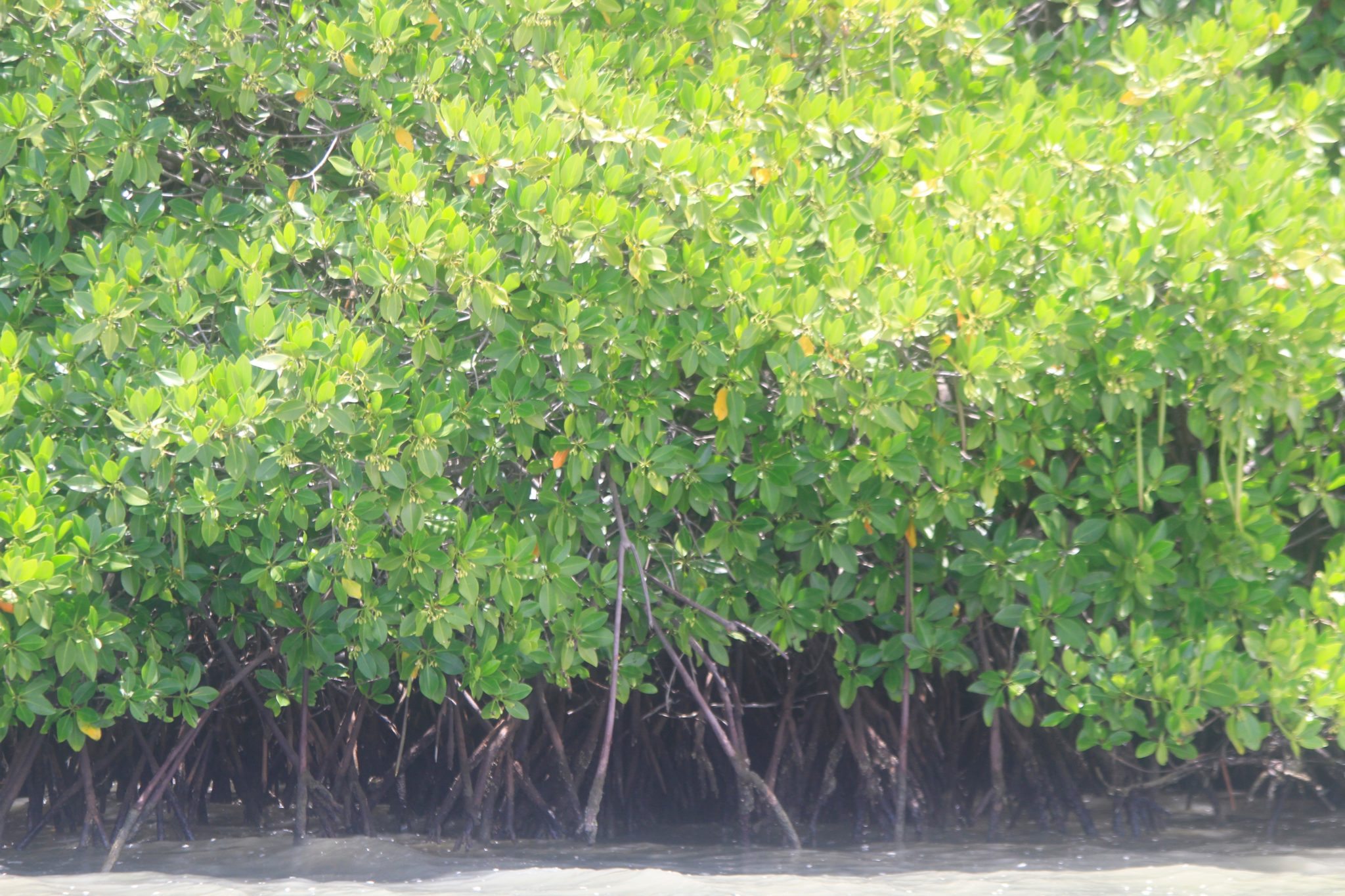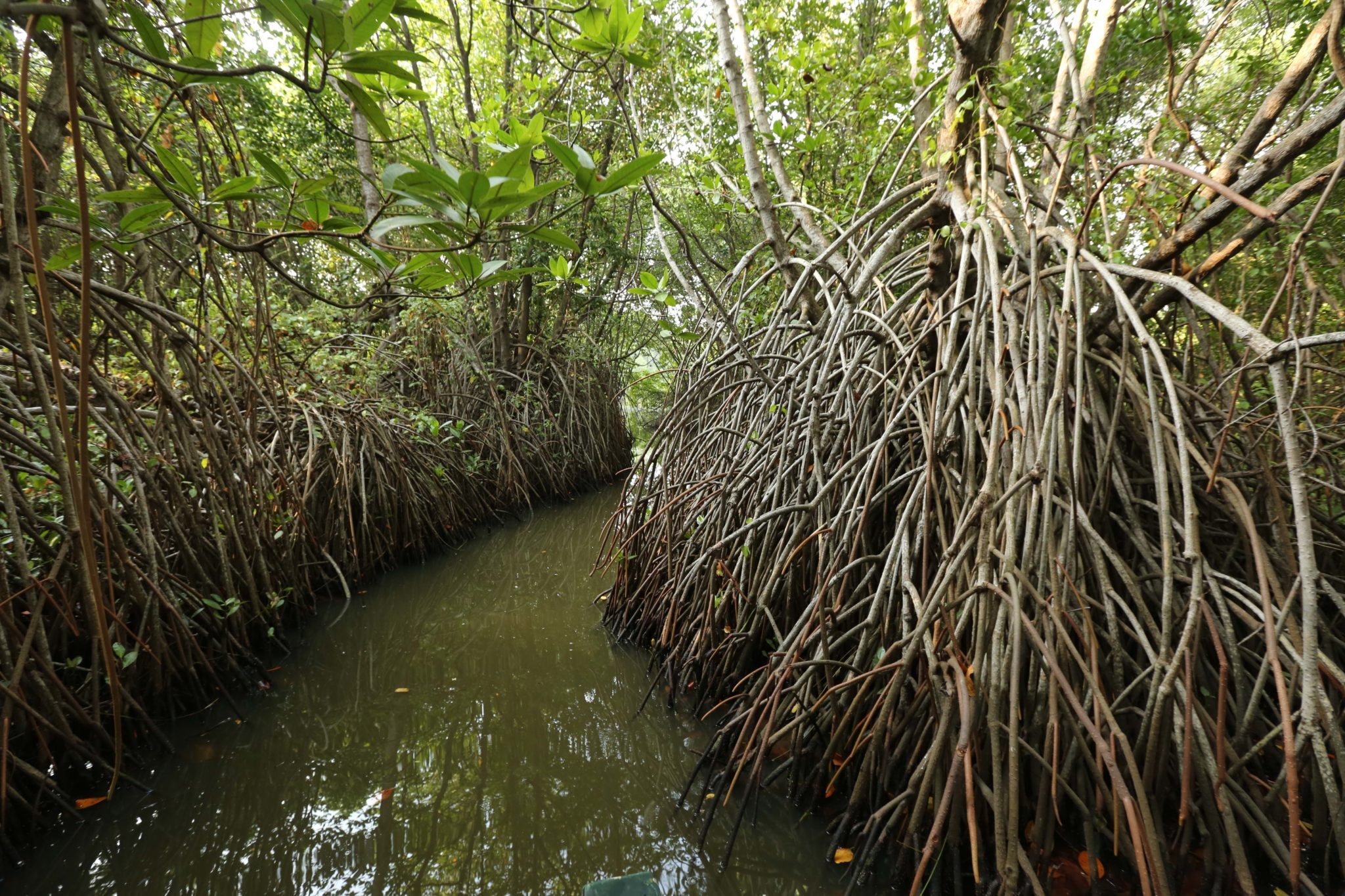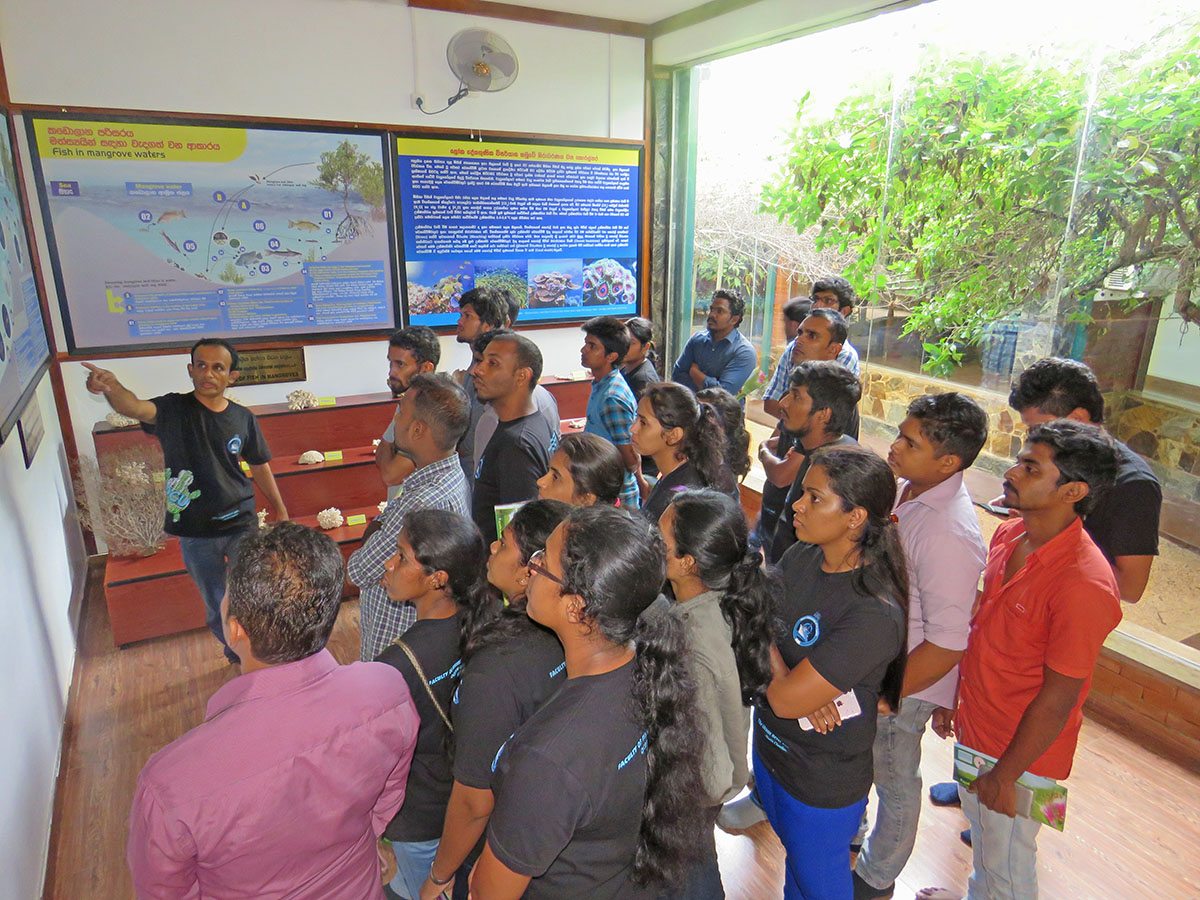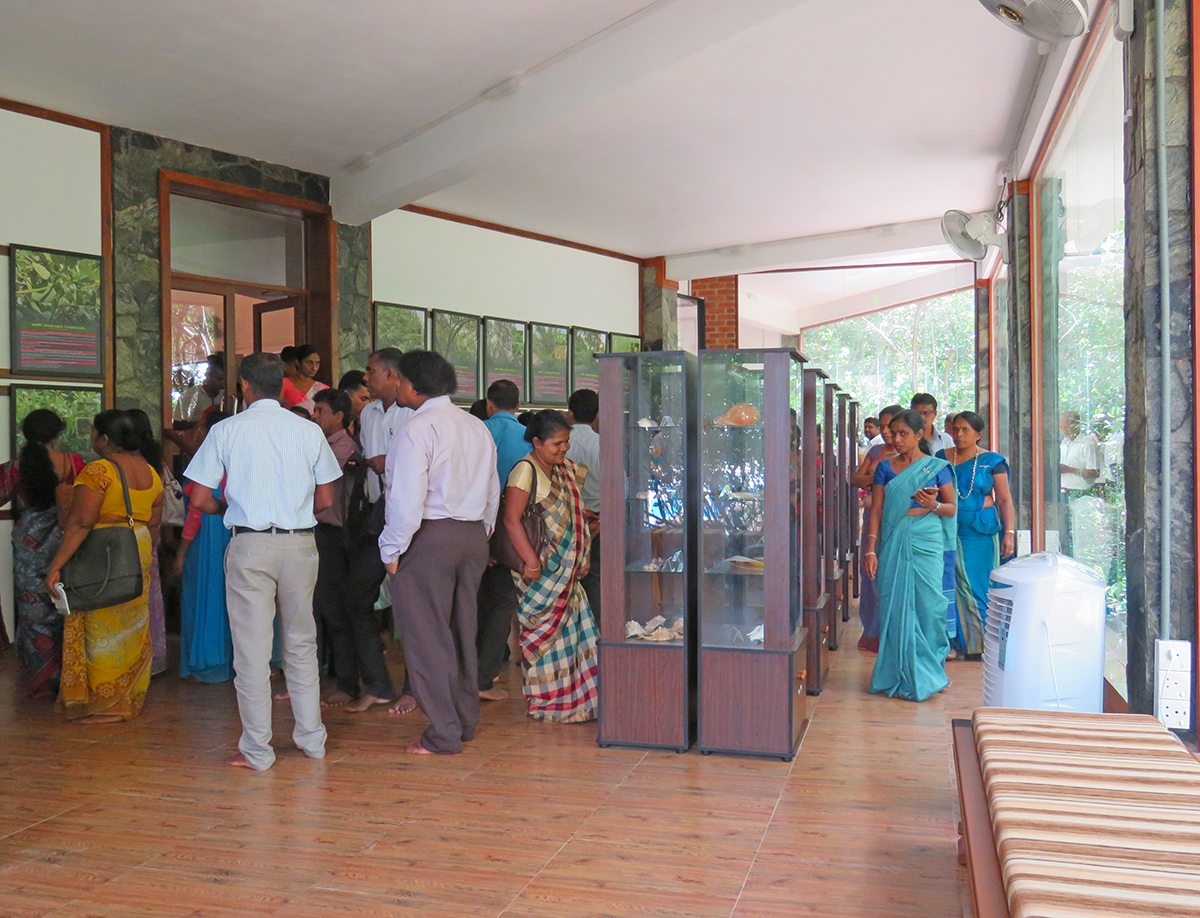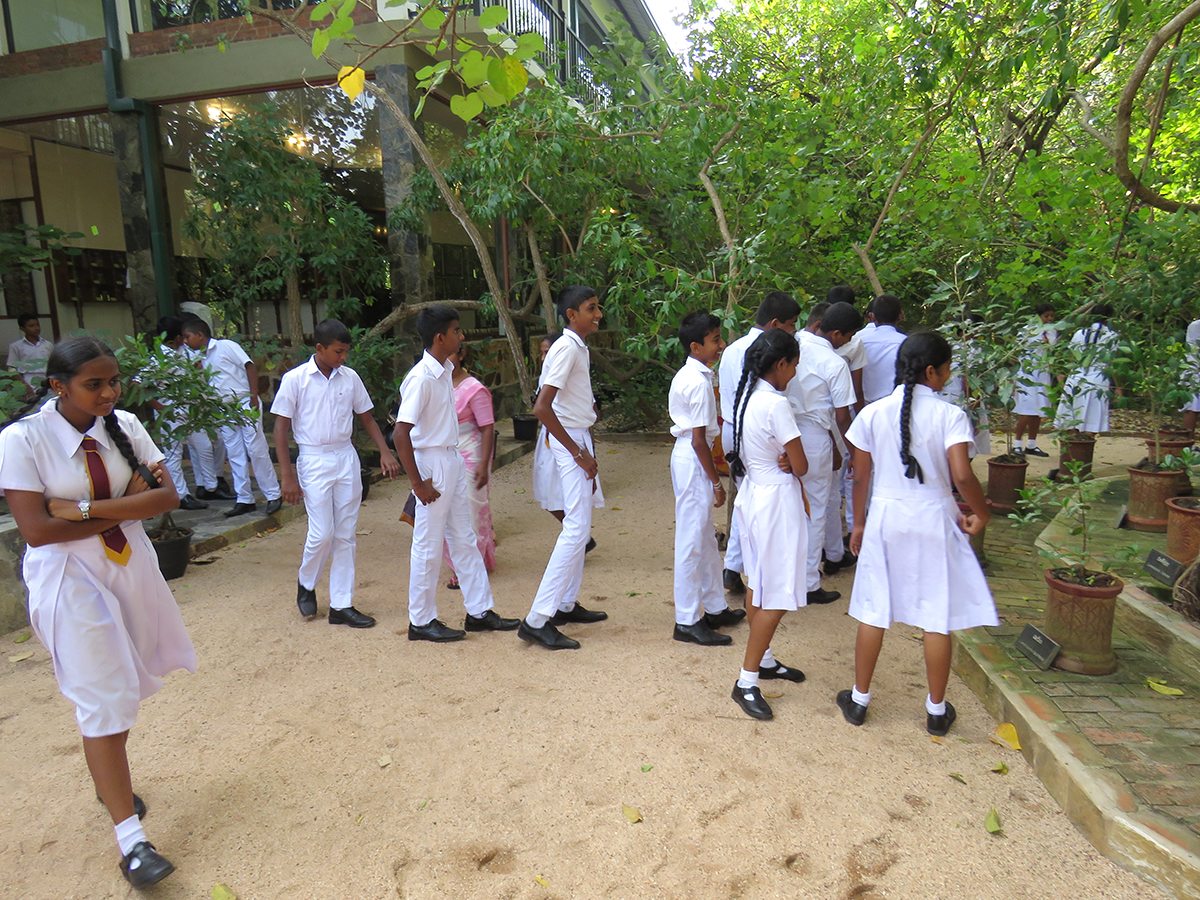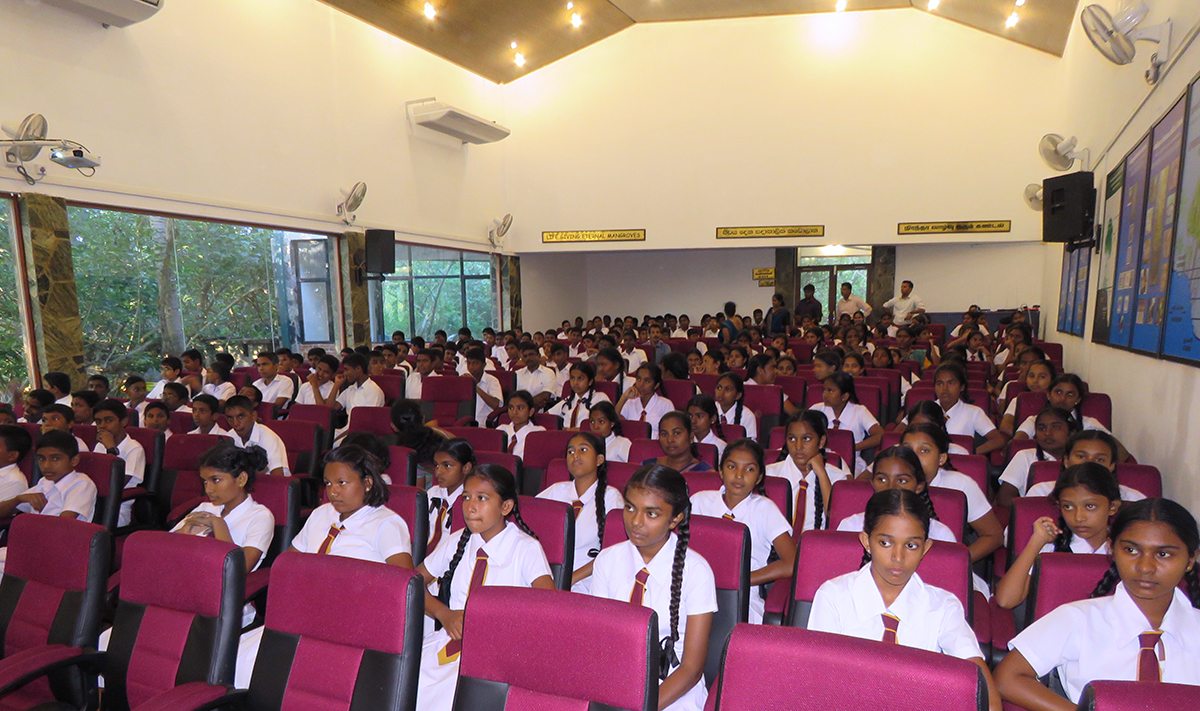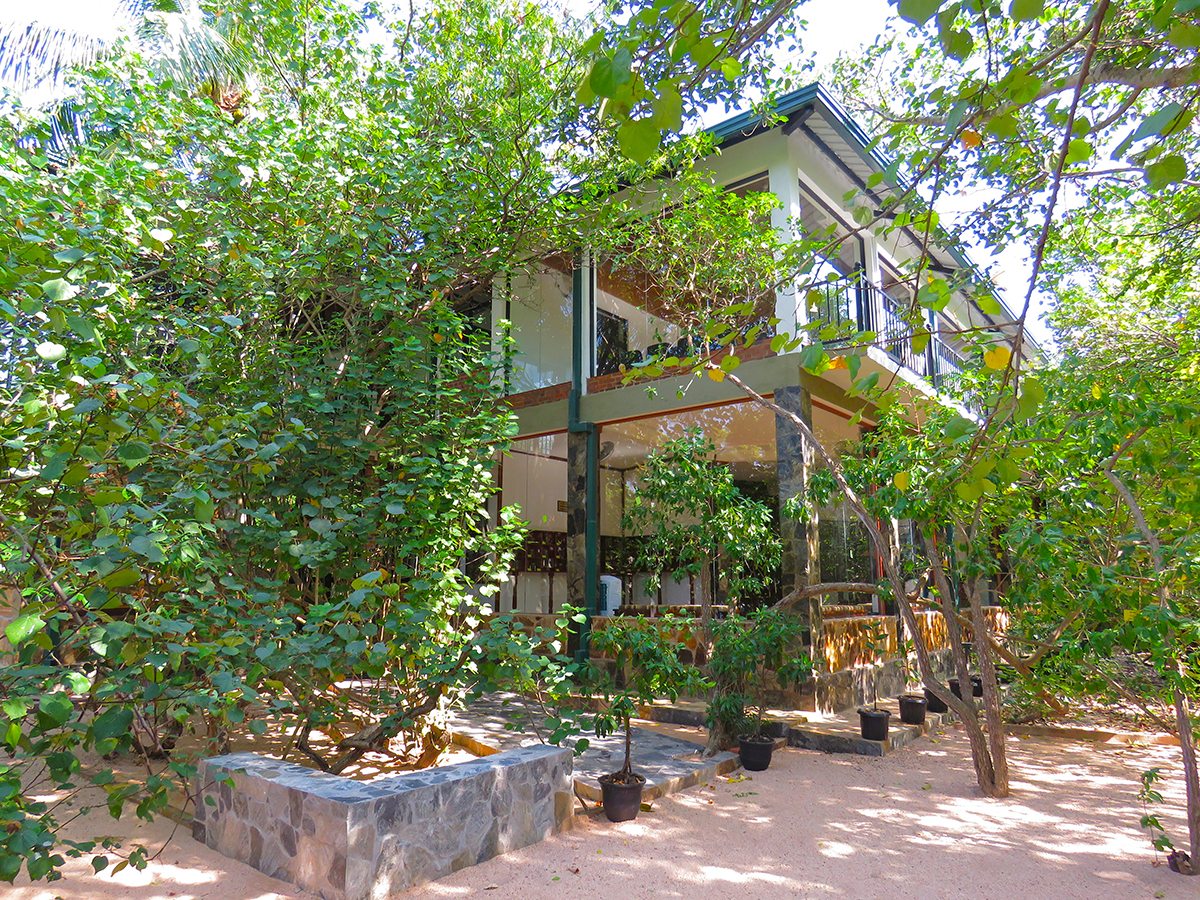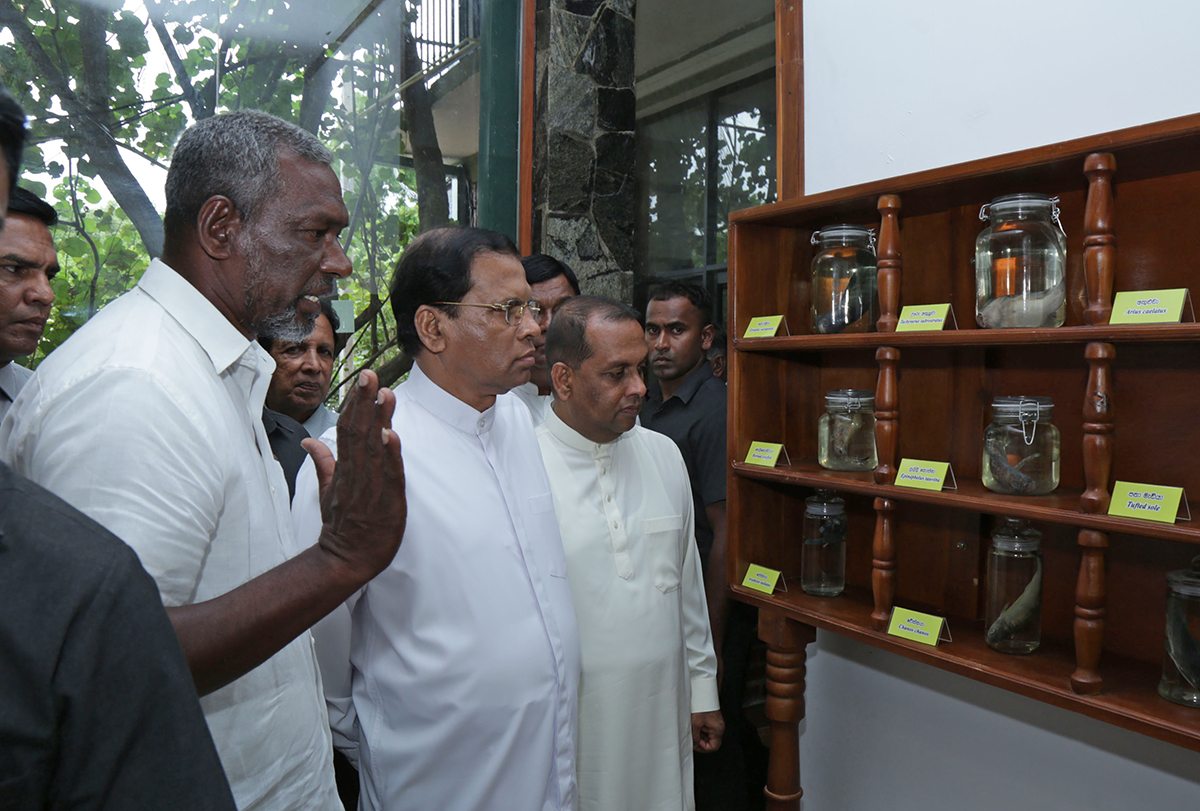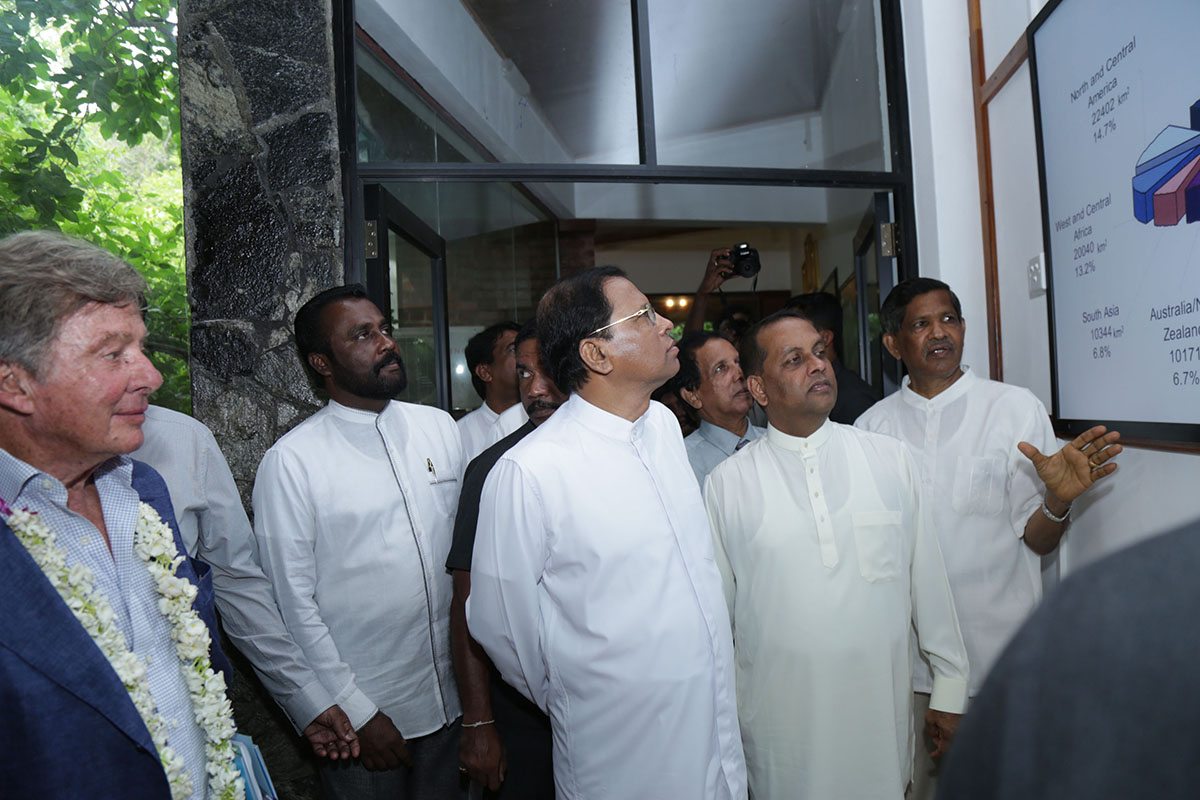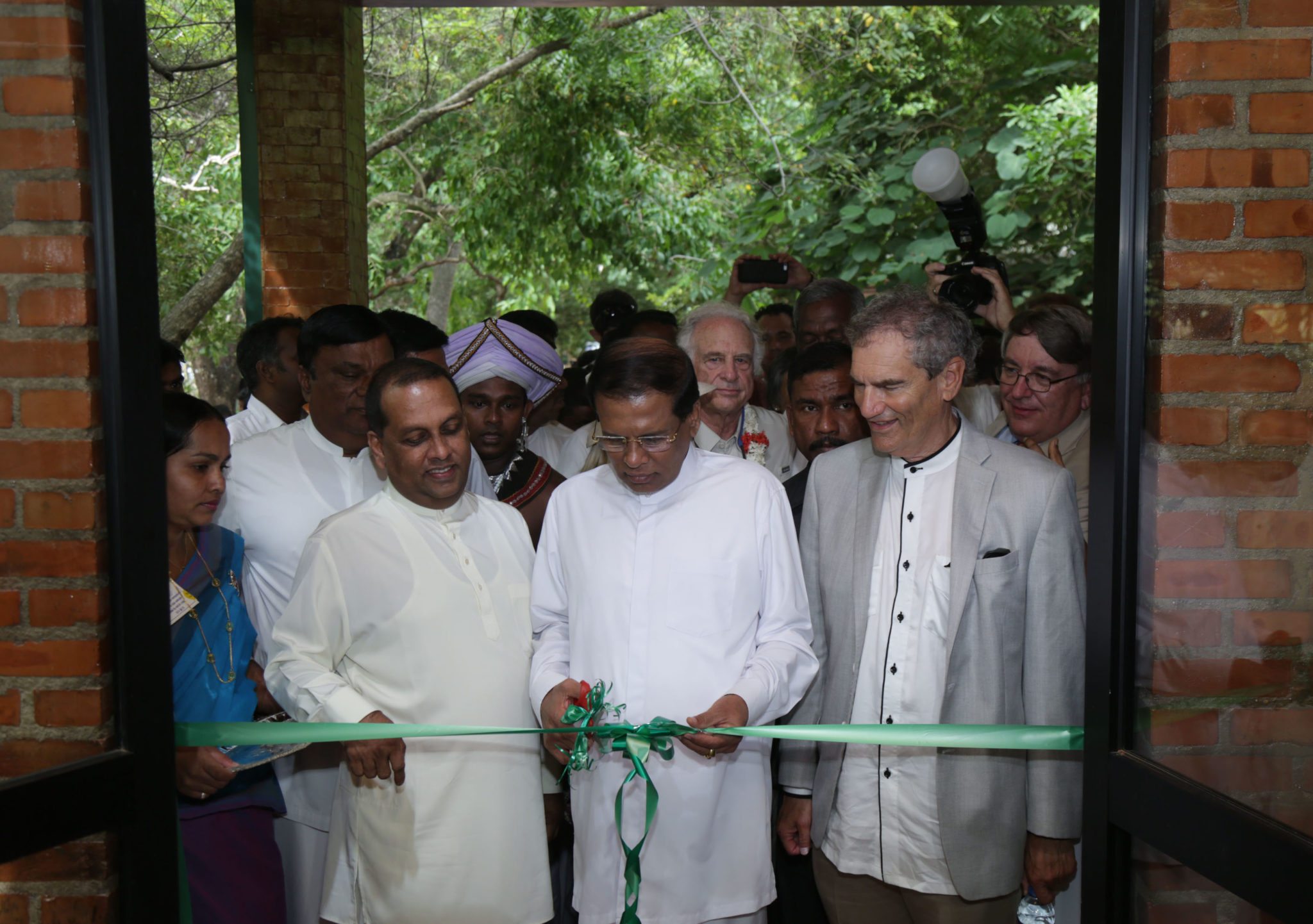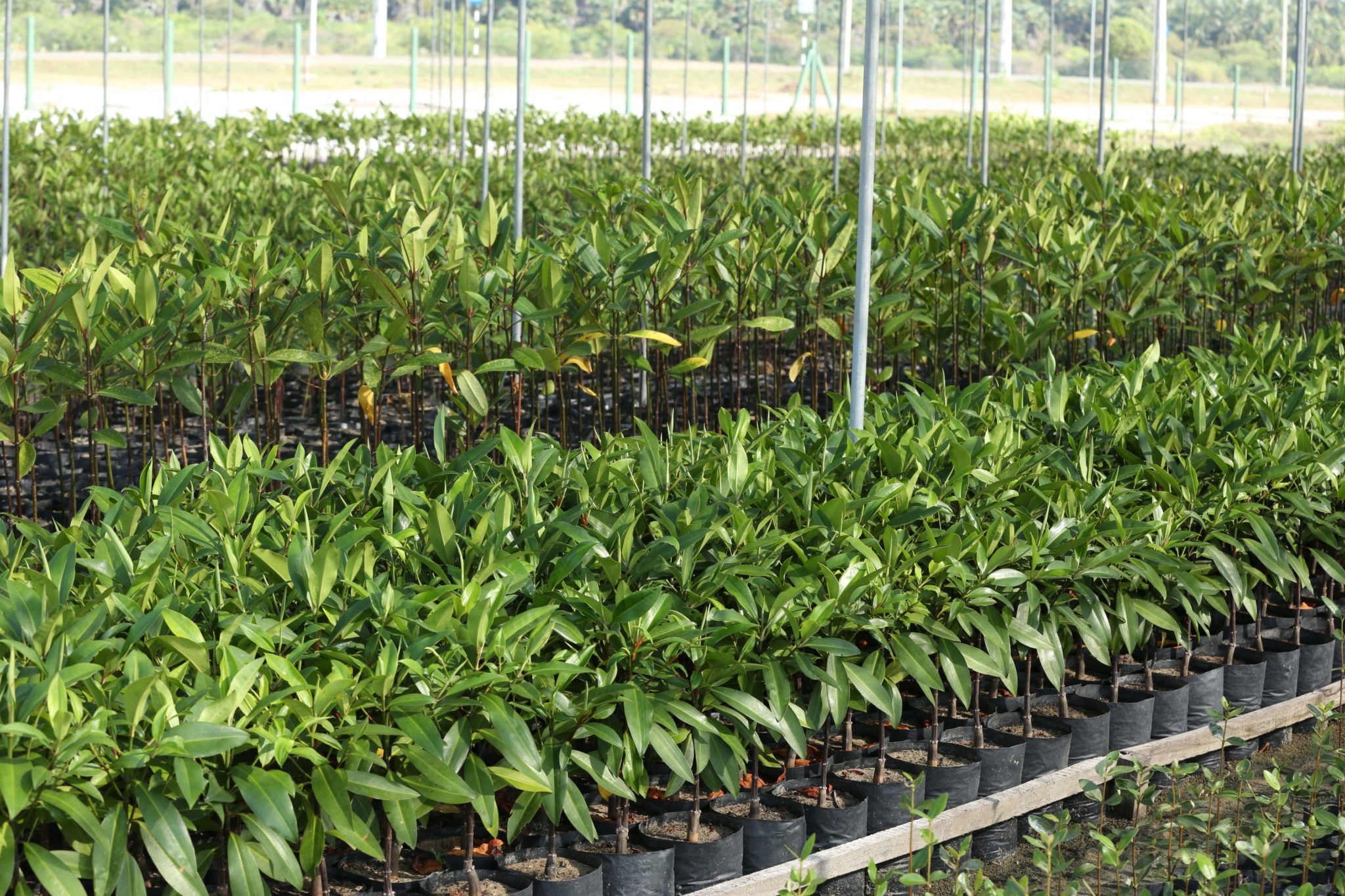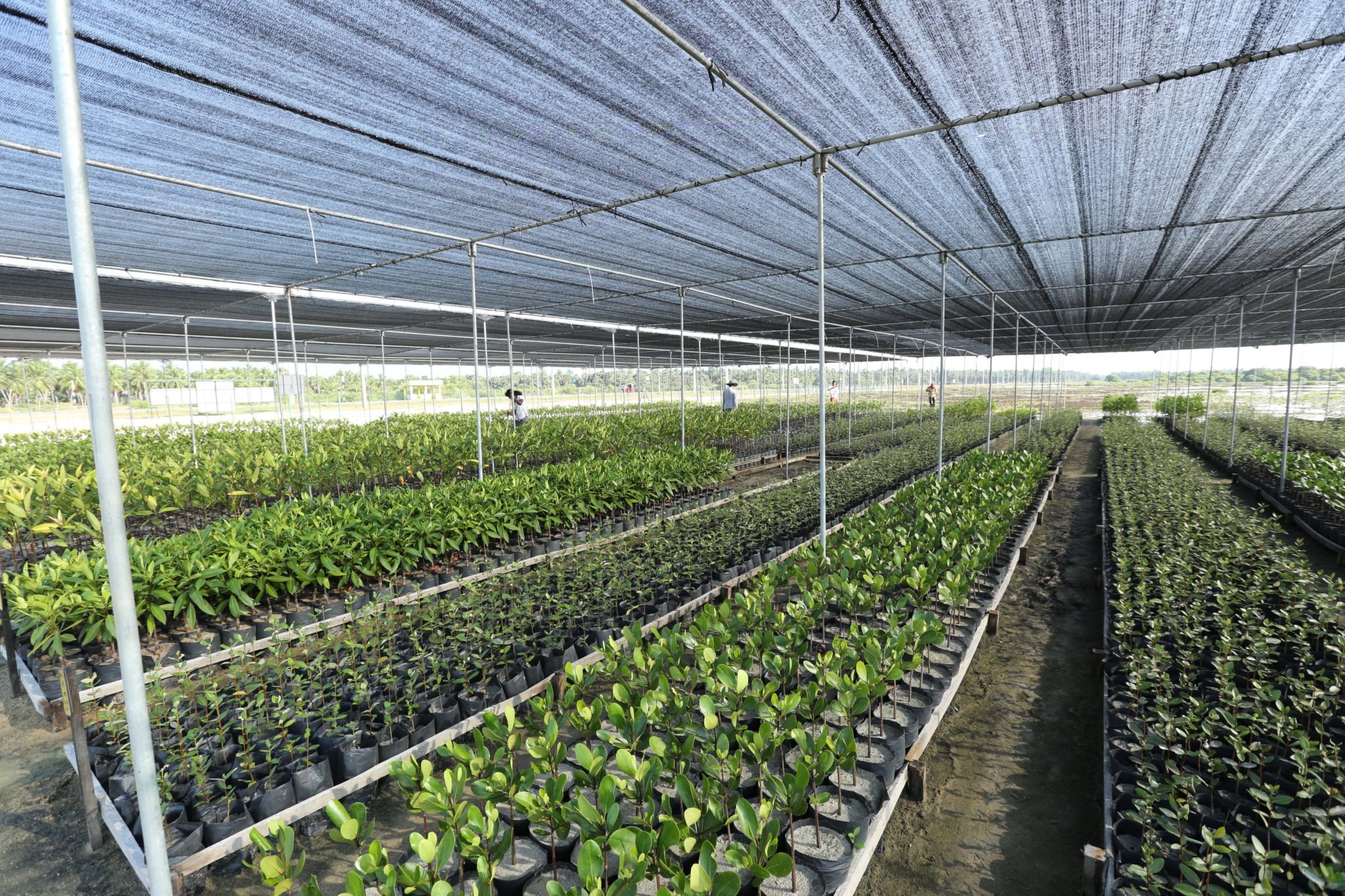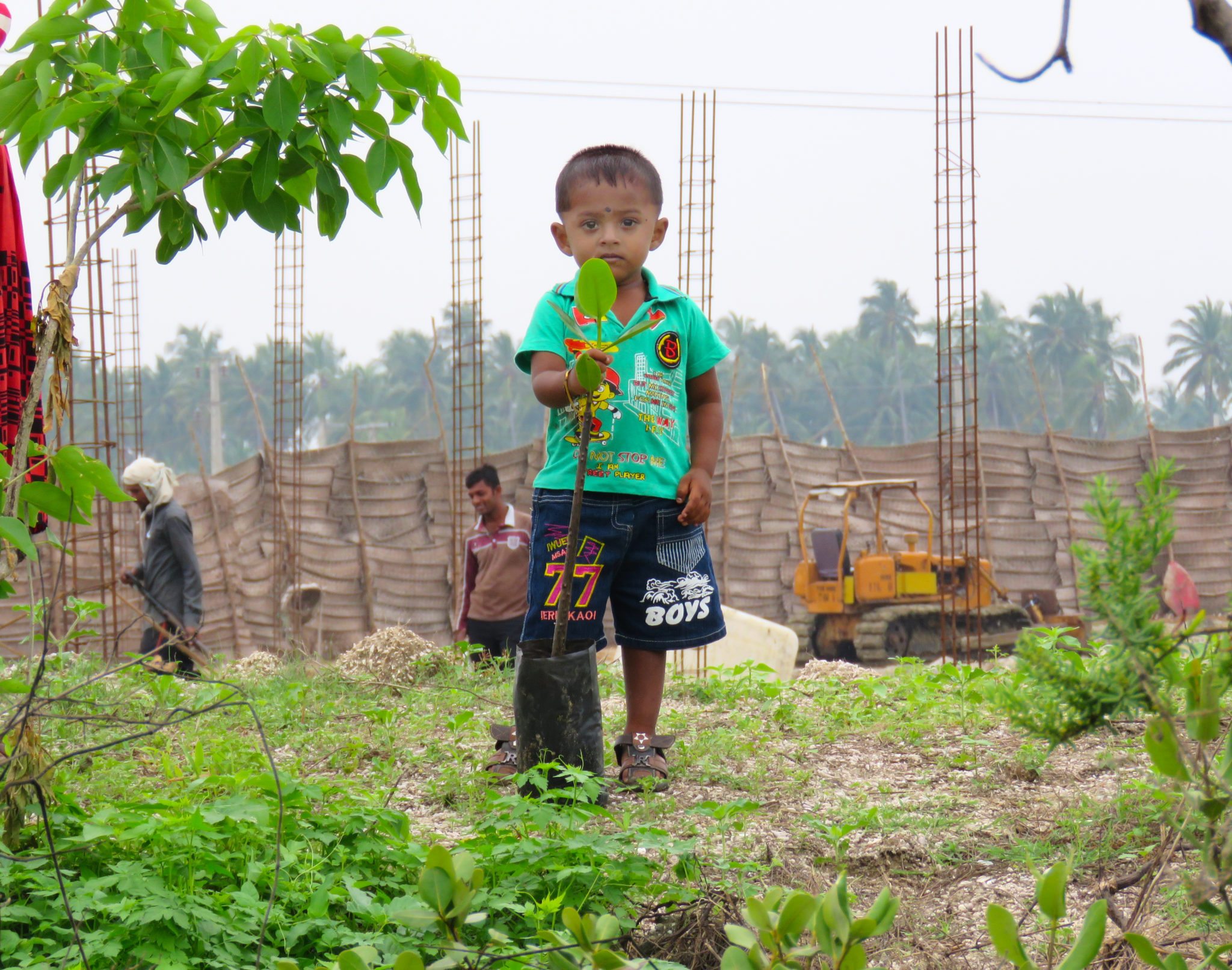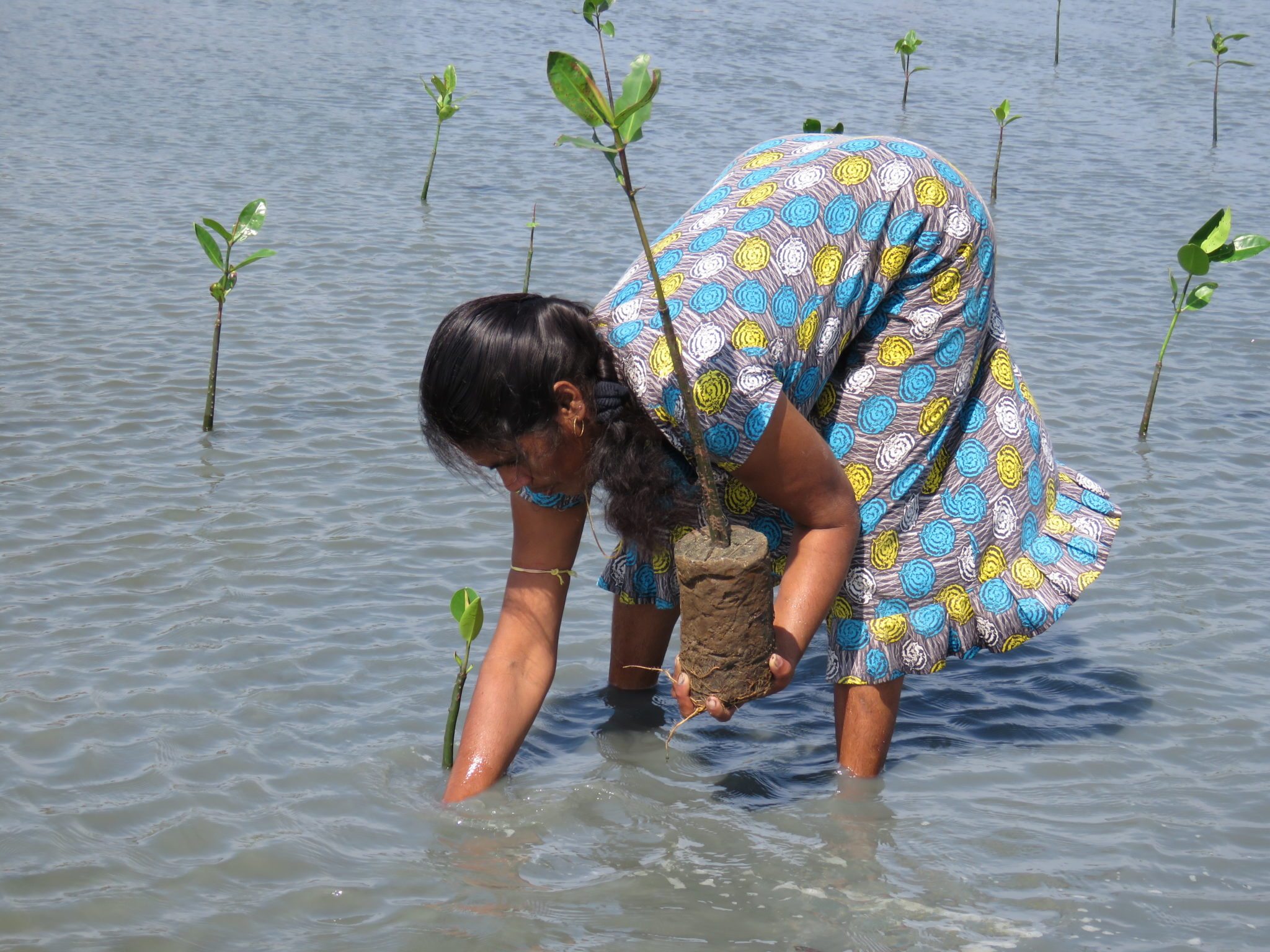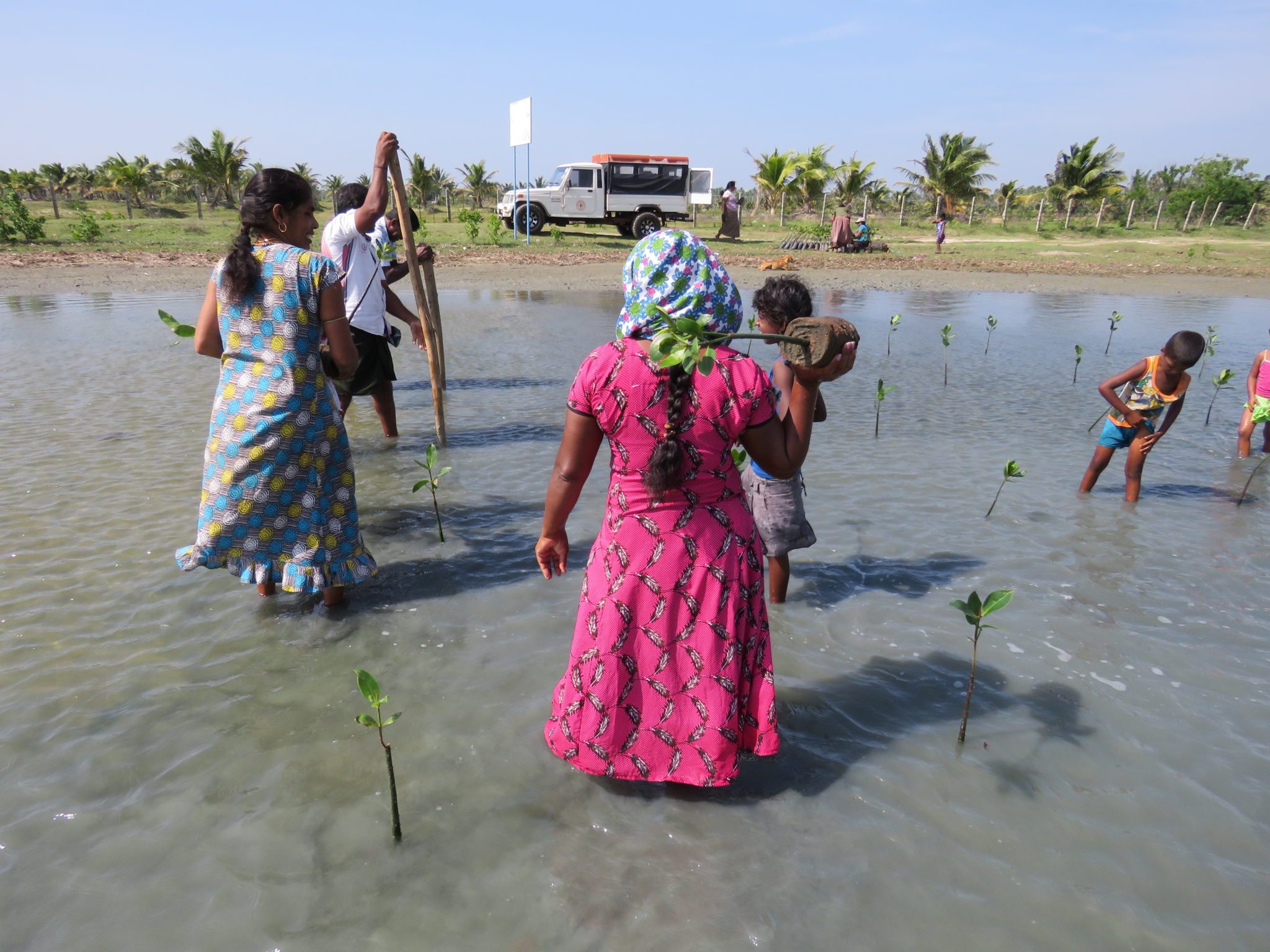Sri Lanka mangrove project success continues at halfway point
Two and a half years into Seacology’s largest-ever project, our program to protect all of Sri Lanka’s mangrove forests continues to make remarkable progress.
Earlier this year, Seacology was named a winner of the Global Resiliency Partnership’s Water Window Challenge in March, yielding almost a million dollars in additional support for the project. With this unanticipated boost in funding, we were able to expand the project to include an additional skills-training facility in Mannar, a northern, majority Tamil district hit particularly hard by the three-decade civil war that ended in 2009. The funding also lets us expand the amount offered through microloans that help disadvantaged Sri Lankan women become entrepreneurs in sustainable trades in exchange for assistance with mangrove conservation.
Work has progressed quickly on the training center, and it is scheduled to officially open in February. When complete, the facility will provide assistance to thousands of women annually.
On July 26, the international conservation community observed the second annual World Mangrove Day, a UNESCO-designated day of action and advocacy for preservation of mangrove ecosystems around the world. The date also marked the first anniversary of the opening of the Seacology-funded mangrove museum in Pambala. It has become a popular destination for local school groups with thousands of visitors in its first year.
Sri Lanka has also made steady progress toward demarcating and mapping all of its existing mangrove forests. With Sudeesa’s assistance, the country’s forestry department has been cataloguing all of these areas for the first time and installing guide posts and signage to mark these now legally protected forests. Approximately 16,000 acres of mangroves are now demarcated.
The devastation caused by recent storms in the Caribbean and elsewhere reminds us that healthy mangroves, along with coral reefs, seagrass beds, and other natural barriers, are vital to protecting coastal communities from storm surges, wind damage, and flooding. As a recent piece in Scientific American points out, “an intact coral reef can reduce wave energy by 97 percent, buffering the impact of storms. Mangroves can reduce wave height by 66 percent…These moments highlight the need to build resilience at a local level, to prevent what we can and prepare to protect and rescue ourselves and each other from what we can’t prevent.”
Sri Lanka is taking up that challenge, working at both the local and national scale to prepare for the next natural disaster through unprecedented mangrove conservation. We still have much work to do in the remaining years of our project. We’re proud to be part of setting this important example, and to be making a tangible difference in the lives of so many Sri Lankans.


